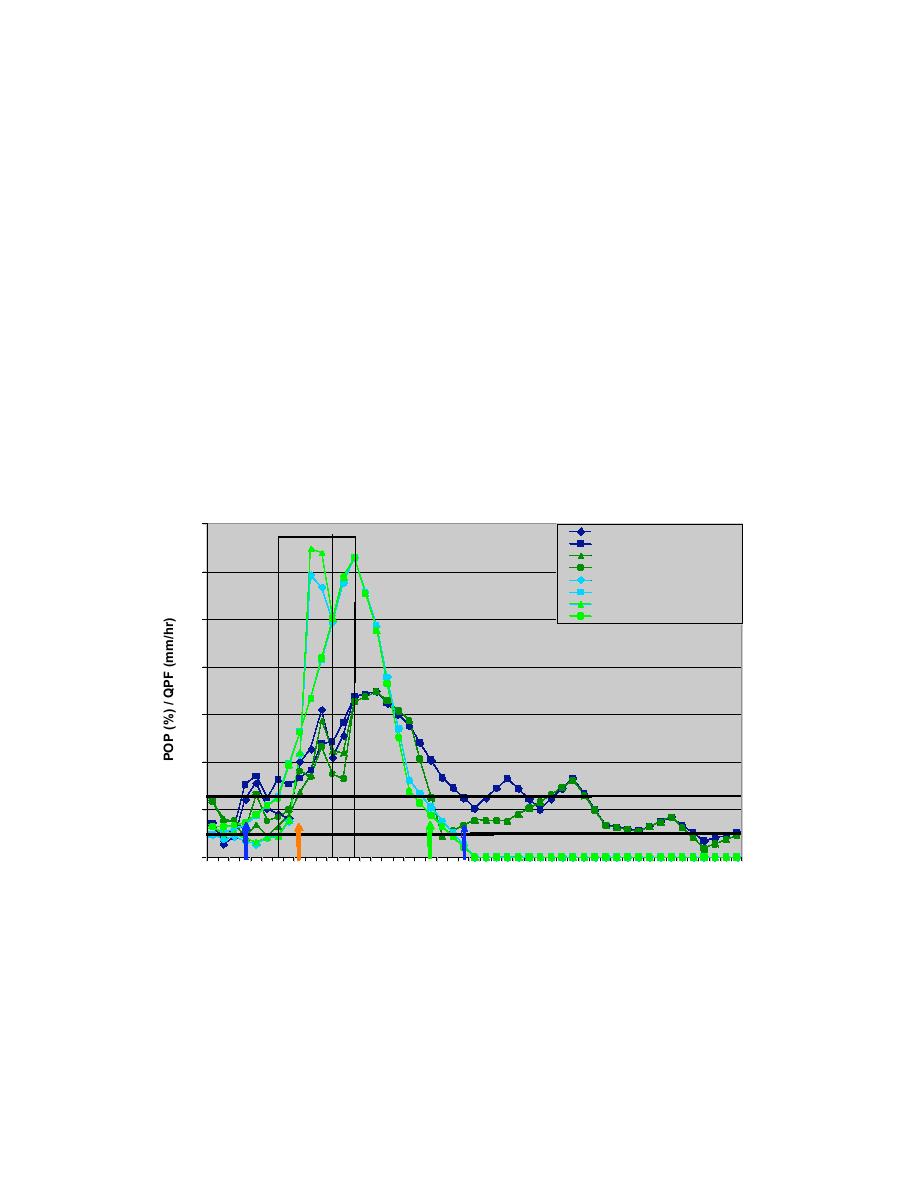
As mentioned above, this case was a very complex system to forecast. The timing and
type of precipitation expected were difficult to capture with much certainty until just
prior to the start of the event. The run time compared here is for a 6 hour lead time
forecast before the start of the event. Forecasts of POP and QPF (Fig.10.43) without the
FSL models result in a prediction of very light precipitation to start about 3 hours too
early at the METAR site. When the FSL models were added in the start time was over-
corrected and ended up being about 2 hours too late. That same, later start time was also
indicated for the RWIS site both with and without FSL. The POP and QPF forecasts
remained quite high well after the actual end of the event, and the stop times were
predicted to be 7-10 hours later than observed. In this case, the event ended at hour 13,
which is at the tail end of the period where FSL models are used. Looking at a later
RWFS run from 06 UTC on 20 February, the same problem is exhibited with the end
time prediction (Fig. 10.44). With the end time of the precipitation within 7 hours of the
run time, the cessation of the event is still predicted to be 5 hours too late. This latter run
was better than the 00 UTC run, however, even with the FSL models in the mix the end
of this event was not well predicted.
POP and QPF for Feb 20, 2004
1.4
AMW OB
AMW METAR POP wFSL
RA
SN
AMW METAR POP woFSL
AMW RWIS POP wFSL
AMW RWIS POP woFSL
1.2
AMW METAR QPF wFSL
AMW METAR QPF woFSL
AMW RWIS QPF wFSL
AMW RWIS QPF woFSL
1
0.8
0.6
POP Threshold
0.4
QPF Threshold
0.2
METAR w/wo FSL End
METAR woFSL
0
Start
METAR wFSL/RWIS w/woFSLStart RWIS w/woFSL End
0
2
4
6
8
10 12 14 16 18 20 22
0
2
4
6
8
10 12 14 16 18 20 22
0
Feb 20, 2004
Feb 21, 2004
Fig. 10.43. Same as Fig. 10.38 except for probability of precipitation (%)
and quantitative precipitation forecast (mm/hr). The blue arrows indicate
the forecasted start (without FSL) and stop (with and without FSL) times
at the METAR site, the orange arrow indicates the start time (with FSL) at
the METAR site and (with and without FSL) at the RWIS site, and the
green arrow indicate the stop (with and without FSL) times at the RWIS.
71



 Previous Page
Previous Page
